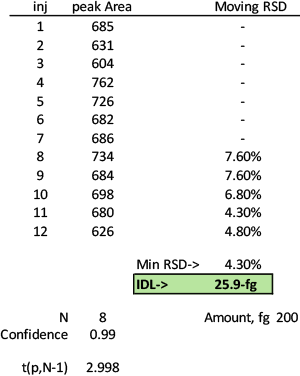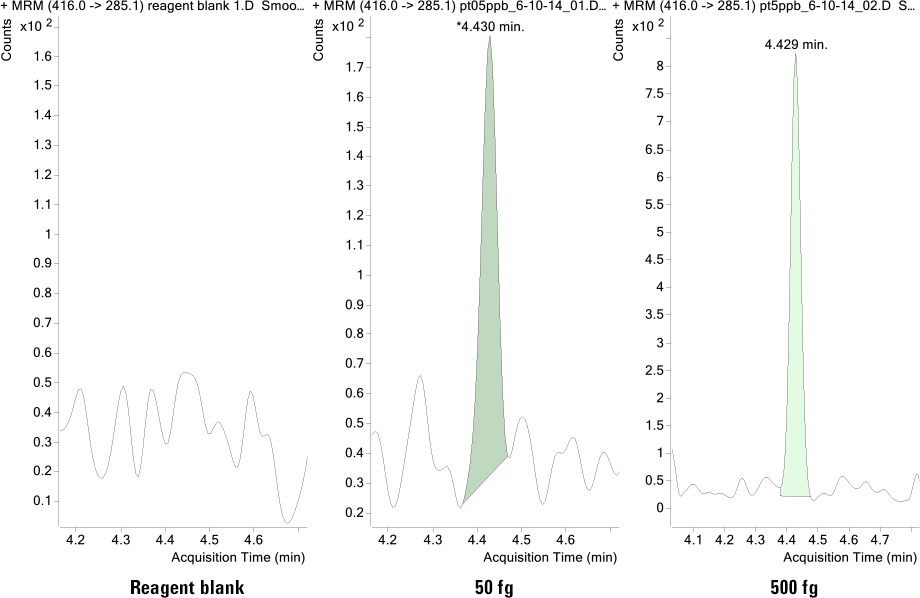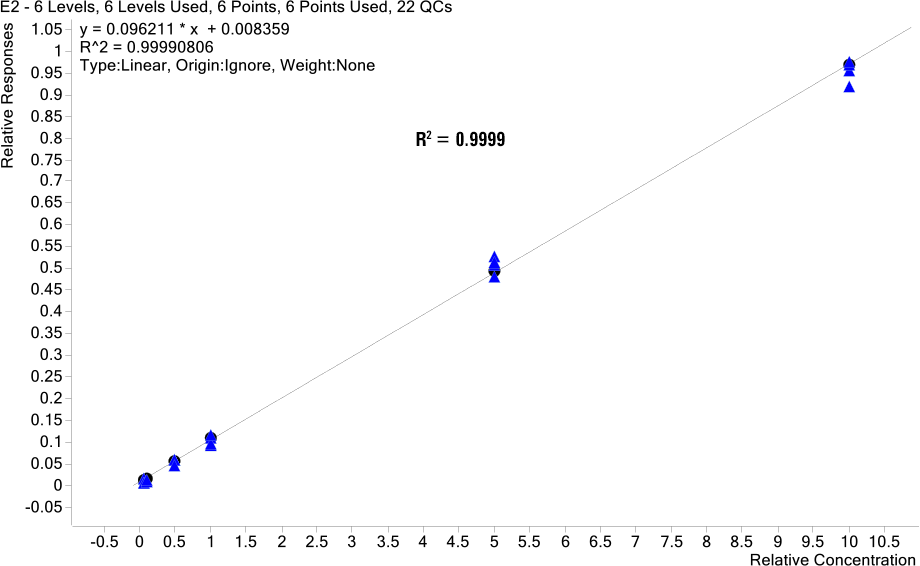Access Agilent eNewsletter, October 2014
>> Update My Profile | Subscribe to Access Agilent | Article Directory

Reach femtogram injection levels of 17β-estradiol in EI mode with the Agilent 7010 Triple Quadrupole GC/MS
By Melissa Churley
Agilent Senior Applications Scientist
Highly sensitive and reproducible methods are required to monitor levels of estrogenic and androgenic steroid hormones in biological fluids and in the environment. In negative chemical ionization (NCI) mode, detection of ≤ 1pg/mL (≤ 1 femtogram injected) of 17β-estradiol in serum has been achieved using the Agilent 7000 Triple Quadrupole GC/MS (see Macherone, et al.). When using electron ionization (EI) mode however, method detection limits (MDLs) for 17β-estradiol in water from various environmental sources are approximately 1 ng/L, or 1 pg injected (results are examined in Agilent Application Note 5990-9988EN). The new Agilent 7010 Triple Quadrupole GC/MS, with its ultra-efficient ionization source, allows for the use of a one-step derivatization procedure to reach femtogram detection levels for 17β-estradiol in EI mode.
Maximum sample path inertness with Agilent GC/MS solutions
In our study, the Agilent 7010 Triple Quadrupole GC/MS was evaluated using 17β-estradiol and it was determined that the instrument detection limit (IDL) is approximately 26 fg; see Figure 1. TMS derivatives of 17β-estradiol and 17β-estradiol-D5 ISTD were prepared by adding 100 µL of BSTFA (99%) – TMCS (1%), 100 µL anhydrous pyridine, and 800 µL anhydrous acetonitrile to vials containing 10 µg and 1 µg samples, respectively, which had been evaporated to dryness under nitrogen. These were heated at 60 °C for 30 minutes. Derivatized 17β-estradiol was then diluted with derivatizing reagent to prepare working standards at 0.05, 0.1, 0.5, 1, 5 and 10 ng/mL. Derivatized ISTD was diluted and added to 50 µL aliquots of working standards to prepare a set of calibration standards.
Instrument configuration consisted of an Agilent 7010 Triple Quadrupole GC/MS System coupled to an Agilent 7890B Gas Chromatograph, which was equipped with a Multi-Mode Injector (MMI). For maximum sample path inertness the following Agilent parts were used: Ultra Inert HP-5MSUI GC column in the dimension of 15 m x 0.25 mm, 0.25 µm (19091S-431UI) and the Ultra Inert 2 mm dimpled liner (5190-2297). GC parameters were set as described in Agilent Application Note 5990-5513EN except that 1 µL injection volumes were used unless otherwise noted. The ion source was 280 °C and the gain was set to a value of 10.
Our methodology included a sequence of 12 injections of 200 fg (2 µL of 0.1 ng/mL working standard) of 17β-estradiol-TMS to calculate the IDL (99% confidence interval, N=8).
IDL = (t* RSD* concentration)/100
t = Student’s t value for 99% confidence level, n-1 degree of freedom (2.998)
RSD = minimum relative standard deviation
Sets of six calibration standards were injected consecutively five times with calibration on the third, or middle, set. A linear curve fit with no weighting was used and all other points were designated as QCs, which appear as blue triangles in the linear regression plots in Figure 3. Reagent blanks were injected between sets of standards.
Detect lower levels of 17β-estradiol using a simple, one-step derivatization procedure and EI mode
with Agilent 7010 Triple Quadrupole
The repeatability that is required from an analytical instrument is demonstrated by the Instrument Detection Limit, or IDL. In fact, the USEPA, IUPAC, and other respected organizations use similar calculations to determine minimum detection limits for analytical methods (Read this month’s Access Agilent article Restoring the validity of MS sensitivity specifications and Agilent publication 5990-9436EN to see how Agilent is using IDL to benefit customers by utilizing a much more accurate and reliable performance metric for ultra-low noise GC/MS).
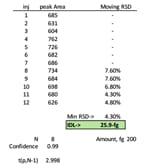 Enlarge
Enlarge
Figure 1. The calculated Instrument Detection Limit (IDL) for 17β-estradiol-TMS is 25.9 fg.
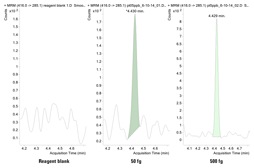 Enlarge
Enlarge
Figure 2. Chromatograms resulting from 1 µL injections of reagent blank, 0.05, and 0.5 ng/mL of a pure 17β-estradiol-TMS standard.
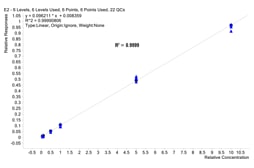 Enlarge
Enlarge
Figure 3. Linearity over the range of 0.05-10 ng/mL 17β-estradiol-TMS.
Results captured in Figure 1 show IDL = (2.998* 4.30* 200)/100 = 25.9 fg.
Figure 2 shows the results for three separate injections displayed in a retention time window of Agilent Mass Hunter Quant software for MRM transition m/z 416 → 285.1. You will see that the reagent blank is free from analyte contamination.
In the results shown for Figure 3, the circles represent calibration points and triangles represent points designated as QCs. The curve fit is linear (no weighting) and the amount injected ranges from 50-10,000 fg.
Increased instrument sensitivity results in better detection and lower cost transport
The increased sensitivity of the new Agilent 7010 Triple Quadrupole GC/MS offers the possibility to detect lower levels of 17β-estradiol using a simple, one-step derivatization procedure and EI mode. Our quest for better detection and lower operating costs does not stop here. Further testing with a suite of analytes is currently underway, the results of which are expected to support decreased environmental water sample volumes, which are currently up to 1 liter, and thus cost-effective transport of smaller samples.
A full spectrum of GC/MS solutions
Agilent offers the industry’s most comprehensive, feature-rich family of GC/MS solutions, systems, and software that provide you with unmatched confidence in accuracy of results, as well as reduced cycle times, reproducibility, and cost savings.
Find out more about how the Agilent 7010 Series Triple Quadrupole system and available tools can deliver spot-on results that save time and eliminate re-work for busy chemists, researchers, clinicians, and analysts.
>> Update My Profile | Subscribe to Access Agilent | Article Directory
